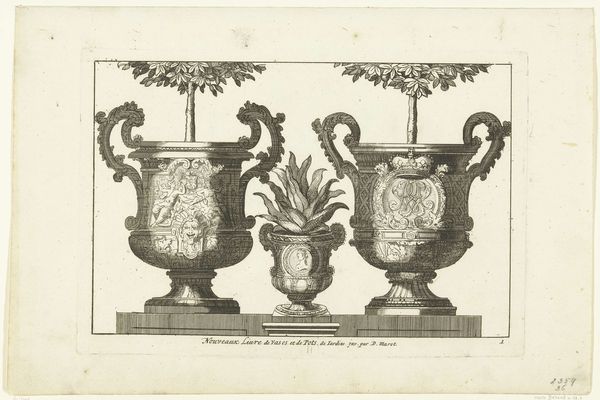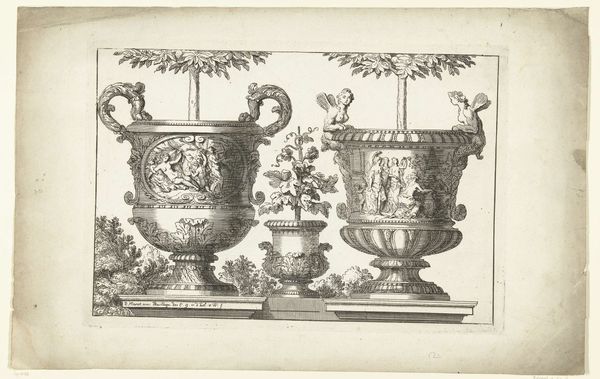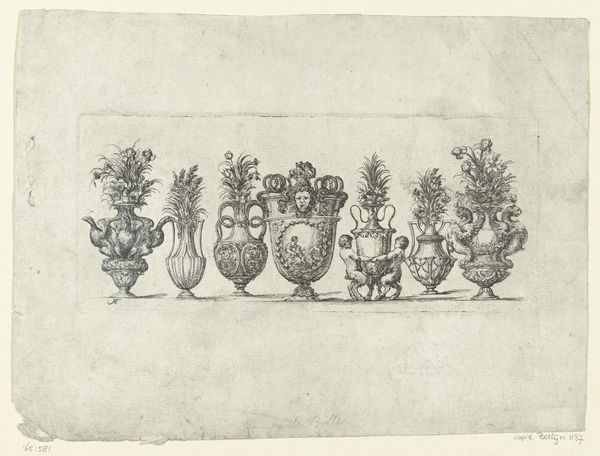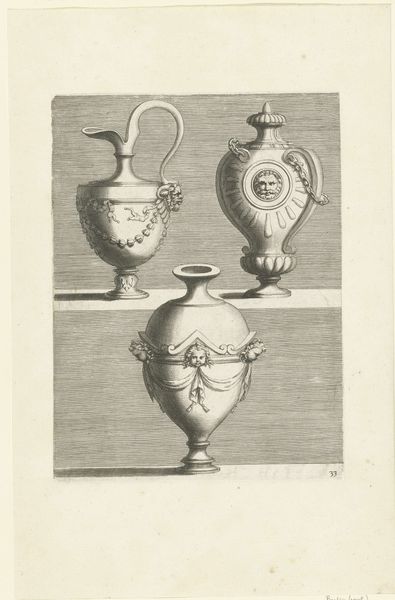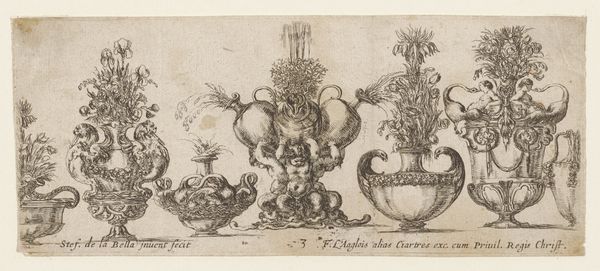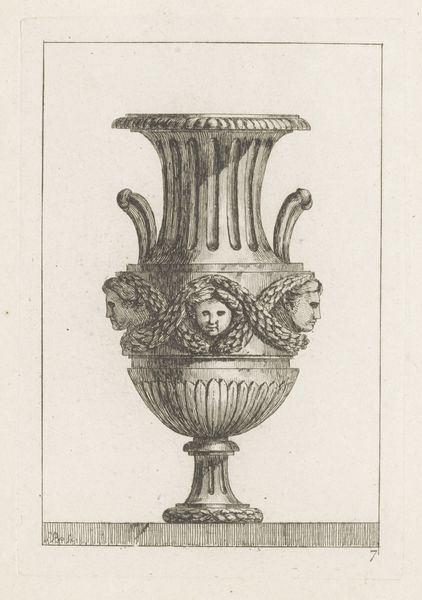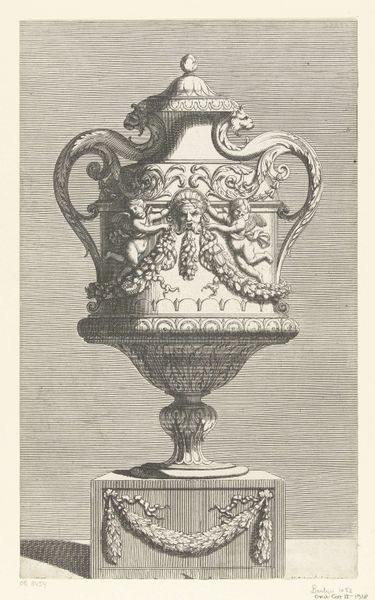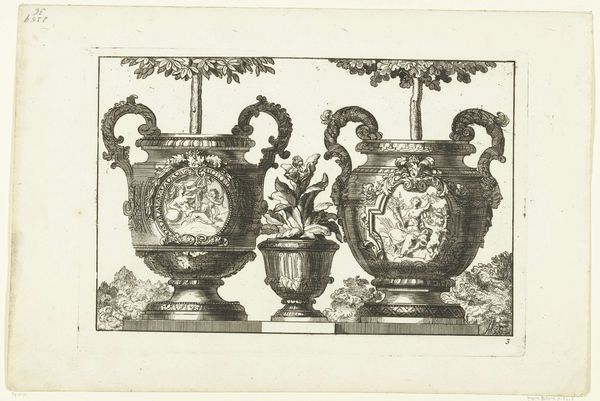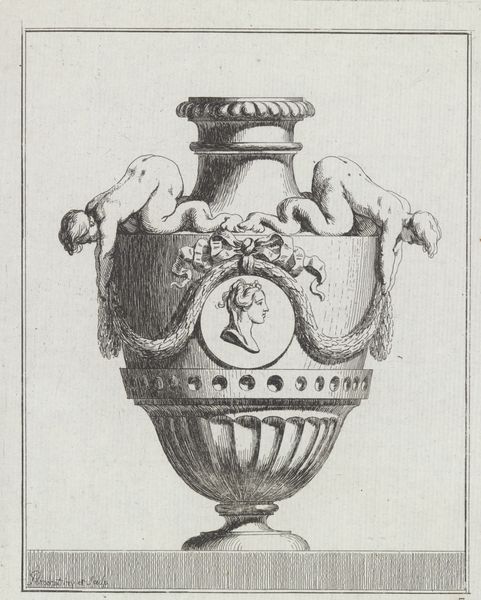
Eight vases, a clepsydra in center decorated with two skulls with laurel wreaths, plate 6 from 'Collection of Various Vases' (Raccolta di Vasi Diversi) 1650 - 1656
0:00
0:00
drawing, print, ink, engraving
#
drawing
#
baroque
#
pen drawing
# print
#
pen illustration
#
pen sketch
#
vase
#
form
#
ink
#
line
#
engraving
Dimensions: Sheet: 3 7/16 × 8 1/8 in. (8.7 × 20.6 cm)
Copyright: Public Domain
Editor: This is "Eight vases, a clepsydra in center decorated with two skulls with laurel wreaths," plate 6 from 'Collection of Various Vases' by Stefano della Bella, dating from 1650-1656. It’s an engraving, isn’t it? I'm really struck by the variety; each vase has a unique shape and decoration. The central one with the skulls is quite macabre, almost a memento mori. How do you interpret this work, particularly its social or historical context? Curator: It’s a fascinating print, isn't it? The variety you note is precisely the point. Della Bella was working within a print market that craved novelty and erudition. These vases aren't merely decorative objects. Consider the culture of collecting during this period. Antiquarianism was on the rise; these images would have fueled collectors' imaginations and desires, informing their acquisitions. The skulls, yes, are a *memento mori*, a reminder of mortality. But even that element served a social function; what did death symbolize to people of that time? Editor: That makes sense. So the print is like a catalogue or an advertisement geared towards the fashion of collecting. Were prints like this one circulated amongst a certain societal class, then? Curator: Precisely. The inscription indicates a privilege granted by the King – signifying the protection of intellectual property, a burgeoning concept then tied closely to power. The images would have circulated among elite circles—aristocrats, wealthy merchants—those with the means to collect actual antiquities and, significantly, those keen to display their taste and learning. Consider the role of the "cabinet of curiosities" at this time; how would a print like this function within such a space? Editor: It gives insight into what was considered aesthetically pleasing and intellectually stimulating. Curator: Exactly. Della Bella presents not just forms but a statement about cultural values, wealth, and the performative aspects of collecting in 17th-century society. I've never considered it from this perspective before. Editor: Looking at art through a historical lens gives me new appreciation of how collecting practices have social underpinnings.
Comments
No comments
Be the first to comment and join the conversation on the ultimate creative platform.


